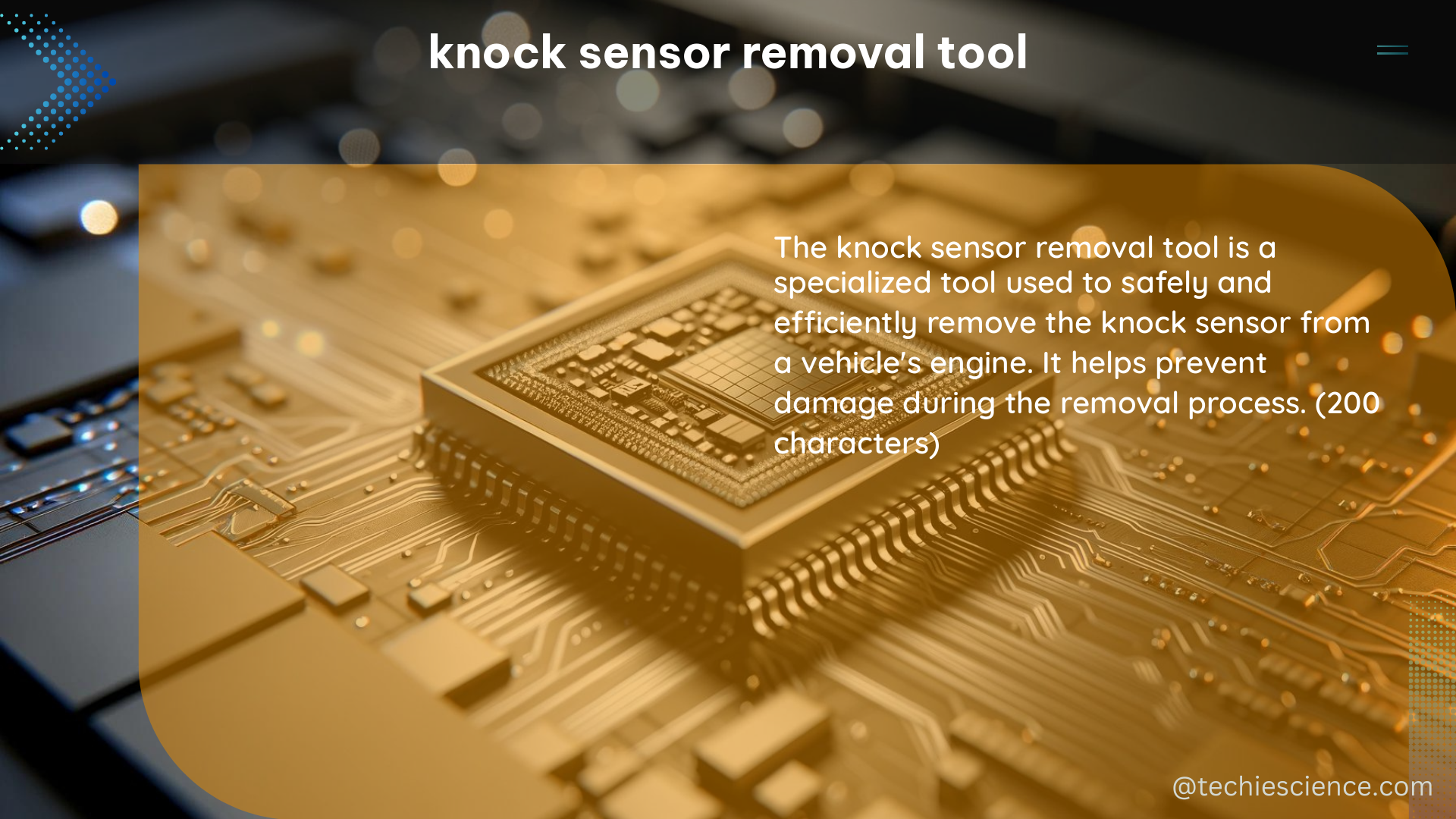The knock sensor is a critical component in an engine’s management system, and its removal or improper installation can lead to engine performance issues or even severe damage. This comprehensive guide will provide you with the technical specifications, tools, and techniques required for the safe and effective removal of a knock sensor.
Torque Specifications for Knock Sensor Installation
The torque specifications for installing a knock sensor typically range from 14 to 18 ft-lbs. To ensure a proper and secure installation, it is recommended to use a torque wrench with a 1/2″ drive and a range of 20-150 ft-lbs. This will allow you to accurately measure and apply the necessary torque to the knock sensor.
It is essential to use the correct tool for the job, as a 15/16″ socket with a slit down the middle is not typically used for knock sensor installation. Using the wrong tool can lead to damage to the sensor or the engine components, potentially causing costly repairs.
Knock Sensor Removal Techniques

When it comes to removing a knock sensor, a unique trick involves using an OBS tire tool. This method can be particularly helpful when the right tools are not readily available or accessible.
To remove the knock sensor using an OBS tire tool:
- Locate the knock sensor, which is typically located on the engine block or cylinder head.
- Carefully insert the OBS tire tool into the knock sensor’s housing, ensuring that it is securely positioned.
- Gently pry the sensor out of its mounting, taking care not to damage the sensor or the surrounding components.
This method can be an effective alternative when the standard knock sensor removal tools are not available, but it is important to exercise caution to avoid any potential damage.
Diagnosing Knock Sensor Issues
In some cases, knock sensor problems may not be immediately apparent. For instance, a 2004 Mountaineer with a 4.0 Flex Fuel engine showed high knock sensor activity on a scan tool, but the owner could not hear any engine knocking or chain rattle. This situation highlights the importance of proper diagnosis and interpretation of scan tool data.
When dealing with knock sensor issues, it is crucial to:
- Utilize a scan tool to retrieve any diagnostic trouble codes (DTCs) related to the knock sensor.
- Analyze the sensor’s input data, such as voltage, resistance, and activity, to identify any abnormalities.
- Perform visual inspections of the sensor and its wiring to check for any physical damage or loose connections.
- Consider the overall engine performance and any other symptoms that may be related to the knock sensor.
By following a comprehensive diagnostic process, you can accurately identify and address any knock sensor-related problems, ensuring the proper functioning of your engine’s management system.
Knock Sensor Removal Tool Considerations
When selecting a knock sensor removal tool, there are several factors to consider:
- Drive Size: The recommended drive size for a knock sensor removal tool is 1/2″. This ensures a secure and stable connection between the tool and the sensor.
- Torque Range: As mentioned earlier, the torque specifications for knock sensor installation typically range from 14 to 18 ft-lbs. Therefore, a torque wrench with a range of 20-150 ft-lbs is suitable for this task.
- Socket Size: The correct socket size for a knock sensor is usually a 1/2″ drive, not a 15/16″ socket with a slit down the middle.
- Accessibility: In some cases, the knock sensor may be located in a tight or hard-to-reach area of the engine. Consider the tool’s size and shape to ensure it can be easily maneuvered and accessed.
- Compatibility: Ensure that the knock sensor removal tool is compatible with the specific make, model, and year of your vehicle. Some tools may be designed for specific engine configurations or sensor types.
By taking these factors into account, you can select the most appropriate knock sensor removal tool for your needs, ensuring a safe and successful removal process.
Conclusion
The knock sensor is a critical component in an engine’s management system, and its proper installation and removal are essential for maintaining optimal engine performance. This comprehensive guide has provided you with the technical specifications, tools, and techniques required for the safe and effective removal of a knock sensor.
Remember to always use the correct tools, follow the recommended torque specifications, and exercise caution when working on your vehicle’s engine. By adhering to these best practices, you can ensure a successful knock sensor removal and avoid any potential engine damage or performance issues.
References:
– DSM Tuners – Tool for Knock Sensor
– Silverado Sierra – Knock Sensor P0327 P0332 Issue Won’t Go Away
– Performance Trucks – Knock Sensor Removal Trick
– Explorer Forum – Knock Sensor Problems Scan Tool Graphs
– LS1Tech – Knock Sensor Delete Advisable? Ass Kick Waiting to Happen

The lambdageeks.com Core SME Team is a group of experienced subject matter experts from diverse scientific and technical fields including Physics, Chemistry, Technology,Electronics & Electrical Engineering, Automotive, Mechanical Engineering. Our team collaborates to create high-quality, well-researched articles on a wide range of science and technology topics for the lambdageeks.com website.
All Our Senior SME are having more than 7 Years of experience in the respective fields . They are either Working Industry Professionals or assocaited With different Universities. Refer Our Authors Page to get to know About our Core SMEs.